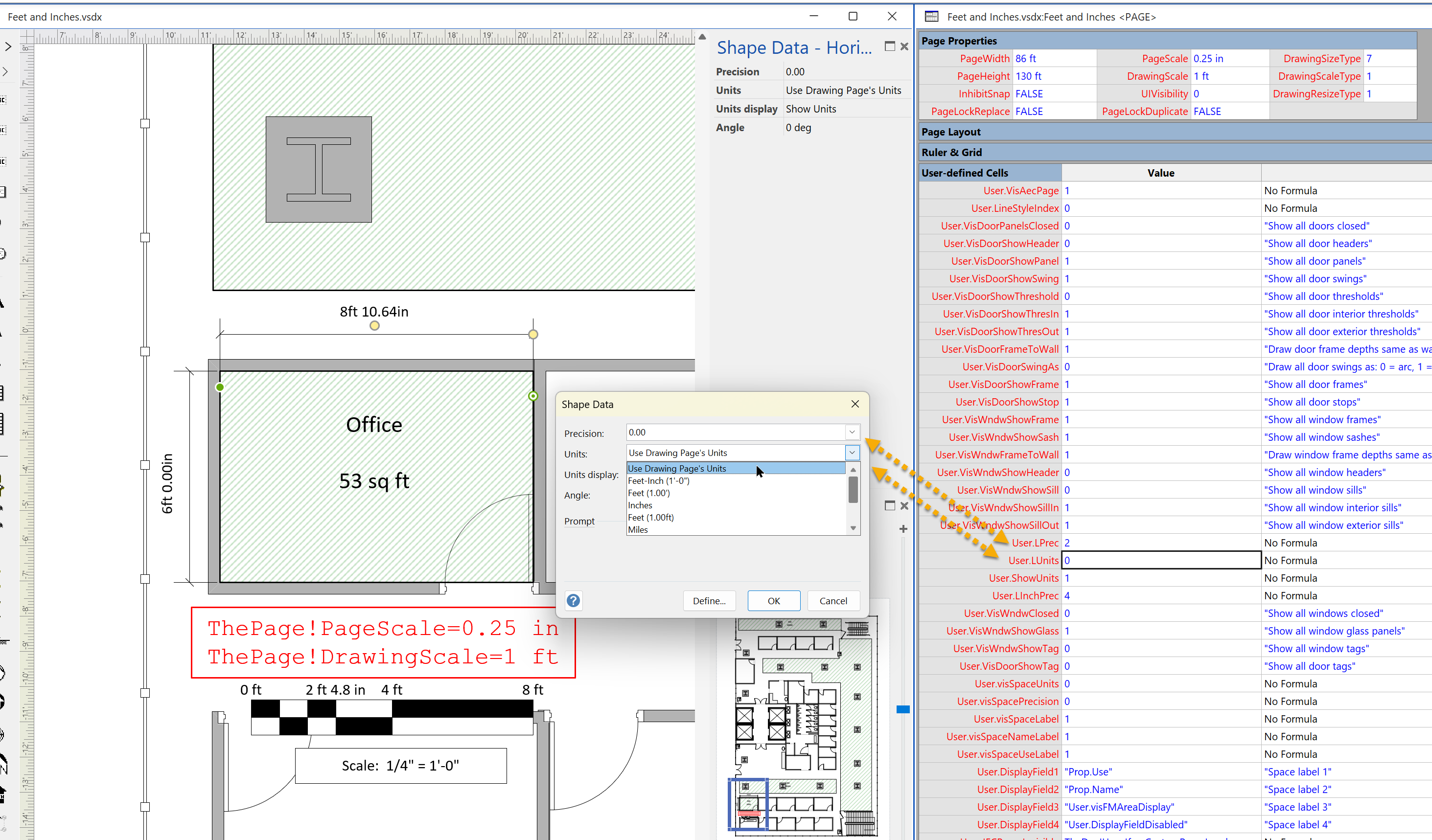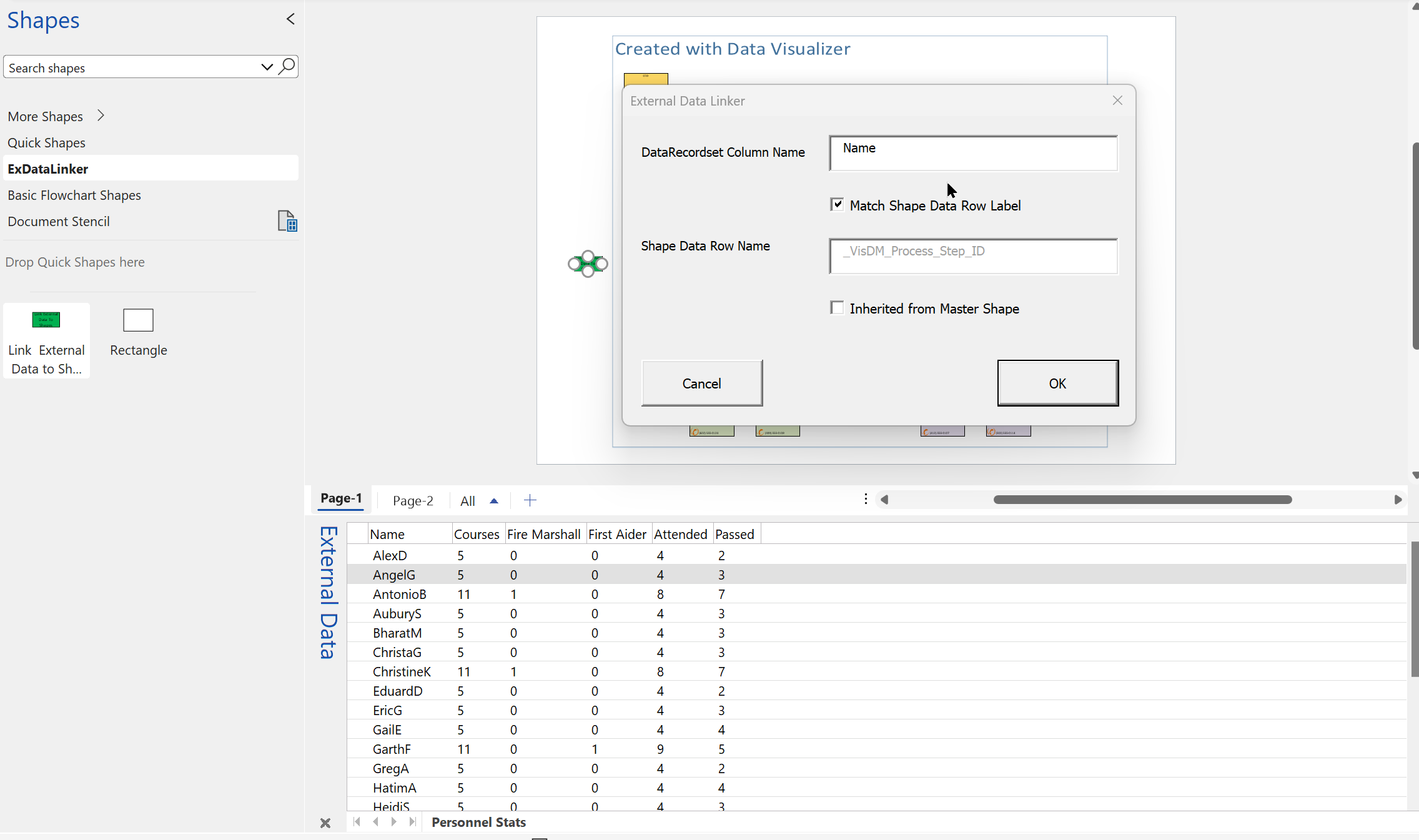Microsoft Visio is the leading business diagramming application worldwide, and is part of the Office 365 eco-system. It therefore has all of the document management and security credentials that goes with Microsoft 365 environment. But Visio is much more than just diagramming because it is a complete data visualization application, due to its smart shapes and programming interface. All of Visio shapes are controlled by their ShapeSheet, which contains formulas just like a worksheet in Excel, and can be edited in much the same way. If that is not enough, then there are application programmers interfaces (API) that can be utilised in Visio add-ins and applications, and even in web pages.

Custom Visio templates can speed up productivity dramatically, and really embody your business requirements and corporate branding.
Visio documents and shapes can be linked to data so that they always reflect the one truth by automatically updating the text, icons, databars, colors, and more, if necessary.
This will enable you to visualize your business in an intelligent and insightful way, that has never been previously possible. We can show you how to ensure that you are creating and utilizing these Visio data graphics in the most efficient manner.
Visio for Web can now be integrated in SharePoint pages or Teams to ensure that everybody can benefit from a visual interactive dashboard.
Latest blog articles about Visio
How to migrate from Lucidchart to Visio
I am pleased to announce that I will be presenting a webinar on Thursday 10th October 2024 where I will be demonstrating how to convert many types of diagrams from Lucidchart to Visio, and keep their smartness. Over the 30 years that I have been using and developing solutions with Visio, I have seen many…
Setting Default Measurement Units in Visio Pages
Microsoft Visio can handle many different units of measurements which can be set for a page and separately for shapes, such as dimensions, within the page. This can confuse some users who expect them both to be the same all the time. In fact, the dimension units can be set to be the same as…
Refreshing the cached installed files of Visio
I have created many Visio solutions over the past 25 years and used a number of methods of creating an installation that includes Visio templates and stencils. I have just wasted many hours trying to debug an installation created with Advanced Installer until I realised that the problem was that Visio was not properly updating…
Linking Data to Shapes in Visio after using Data Visualizer
Data Visualizer (DV) in Visio Plan 2 (Data | Create from Data | Create ) is great because it provides a way of automatically creating a diagram from data, but it also prevents some of the other data-linking features in Visio from being used. This is because DV wants to take control of the data…
Positioning Visio Shape Text Block with a Control Handle
I was recently asked how a control handle can be added to a Visio shape so that it can be used to re-position the text block. Fortunately, it is extremely easy to setup, and requires just two formulas to be updated in the ShapeSheet. This is a great use of the SETATREF(…) function. (more…)
New Requirement for VBA Digital Signatures in Visio
Like most developers, I have to buy a new digital certificate every 3 years to sign my Visio add-ins and VBA projects. Usually that means verifying my bone fides, paying the fee and downloading the certificate, but security has been increased, and now, like everyone else, I have to use a USB key with it…




